We need your consent to use the individual data so that you can see information about your interests, among other things. Click "OK" to give your consent.
ASTM D3689/D3689M-07(2013)e1
Standard Test Methods for Deep Foundations Under Static Axial Tensile Load (Includes all amendments And changes 2/25/2022).
Automatically translated name:
Standard Test Methods for Deep Foundations Under Static Axial Tensile Load
STANDARD published on 15.6.2013
The information about the standard:
Designation standards: ASTM D3689/D3689M-07(2013)e1
Note: WITHDRAWN
Publication date standards: 15.6.2013
SKU: NS-24489
The number of pages: 13
Approximate weight : 39 g (0.09 lbs)
Country: American technical standard
Category: Technical standards ASTM
The category - similar standards:
Earthworks. Excavations. Foundation construction. Underground works
Annotation of standard text ASTM D3689/D3689M-07(2013)e1 :
Keywords:
axial static tensile pile capacity, field testing, jack, load cell, loading procedure, reference beam, ICS Number Code 93.020 (Earth works. Excavations. Foundation construction. Underground works)
Additional information
| Significance and Use | |||||||||||||||||||||
|
4.1 Field tests provide the most reliable relationship between the axial load applied to a deep foundation and the resulting axial movement. Test results may also provide information used to assess the distribution of side shear resistance along the pile shaft and the long-term load-deflection behavior. A foundation designer may evaluate the test results to determine if, after applying an appropriate factor of safety, the pile or pile group has an ultimate static capacity and a deflection at service load satisfactory to support a specific foundation. When performed as part of a multiple-pile test program, the designer may also use the results to assess the viability of different piling types and the variability of the test site. 4.2 If feasible, without exceeding the safe structural load on the pile(s) or pile cap, the maximum load applied should reach a failure load from which the engineer may determine the ultimate axial static tensile load capacity of the pile(s). Tests that achieve a failure load may help the designer improve the efficiency of the foundation by reducing the piling length, quantity, or size. 4.3 If deemed impractical to apply axial test loads to an inclined pile, the engineer may elect to use axial test results from a nearby vertical pile to evaluate the axial capacity of the inclined pile. 1.1 The test methods described in
this standard measure the axial deflection of a vertical or
inclined deep foundation when loaded in static axial tension. These
methods apply to all deep foundations, referred to herein as
“piles,” that function in a manner similar to driven piles or cast
in place piles, regardless of their method of installation, and may
be used for testing single piles or pile groups. The test results
may not represent the long-term performance of a deep
foundation.
1.2 This standard provides minimum requirements for testing deep foundations under static axial tensile load. Plans, specifications, provisions, or any combination thereof prepared by a qualified engineer may provide additional requirements and procedures as needed to satisfy the objectives of a particular test program. The engineer in responsible charge of the foundation design, referred to herein as the engineer, shall approve any deviations, deletions, or additions to the requirements of this standard. 1.3 This standard allows the following test procedures:
1.4 Apparatus and procedures herein designated “optional” may produce different test results and may be used only when approved by the engineer. The word “shall” indicates a mandatory provision, and the word “should” indicates a recommended or advisory provision. Imperative sentences indicate mandatory provisions. 1.5 A qualified geotechnical engineer should interpret the test results obtained from the procedures of this standard so as to predict the actual performance and adequacy of piles used in the constructed foundation. See 1.6 A qualified engineer shall design and approve all loading apparatus, loaded members, support frames, and test procedures. The text of this standard references notes and footnotes which provide explanatory material. These notes and footnotes (excluding those in tables and figures) shall not be considered requirements of the standard. This standard also includes illustrations and appendices intended only for explanatory or advisory use. 1.7 The values stated in either SI units or inch-pound units are to be regarded separately as standard. The values stated in each system may not be exact equivalents; therefore, each system shall be used independently of the other. Combining values from the two systems may result in non-conformance with the standard. 1.8 The gravitational system of inch-pound units is used when dealing with inch-pound units. In this system, the pound [lbf] represents a unit of force [weight], while the unit for mass is slugs. The rationalized slug unit is not given, unless dynamic [F=ma] calculations are involved. 1.9 All observed and calculated values shall conform to the guidelines for significant digits and rounding established in Practice D6026. 1.10 The method used to specify how data are collected, calculated, or recorded in this standard is not directly related to the accuracy to which the data can be applied in design or other uses, or both. How one applies the results obtained using this standard is beyond its scope. 1.11 ASTM International takes no position respecting the validity of any patent rights asserted in connection with any item mentioned in this standard. Users of this standard are expressly advised that determination of the validity of any such patent rights, and the risk of infringement of such rights, are entirely their own responsibility. 1.12 This standard does not purport to address all of the safety concerns, if any, associated with its use. It is the responsibility of the user of this standard to establish appropriate safety and health practices and determine the applicability of regulatory limitations prior to use. |
|||||||||||||||||||||
| 2. Referenced Documents | |||||||||||||||||||||
|
Similar standards:
Historical
1.2.2008
Historical
1.2.2006
Historical
1.2.2006
Historical
15.1.2010
Historical
1.10.2009
Historical
1.8.2012
We recommend:
Technical standards updating
Do you want to make sure you use only the valid technical standards?
We can offer you a solution which will provide you a monthly overview concerning the updating of standards which you use.
Would you like to know more? Look at this page.


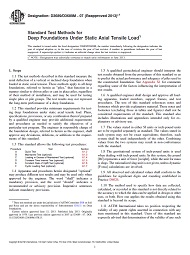
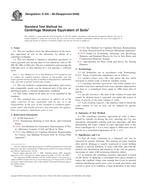 ASTM D425-88(2008)..
ASTM D425-88(2008)..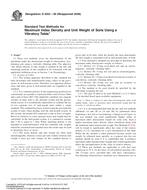 ASTM D4253-00(2006)..
ASTM D4253-00(2006)..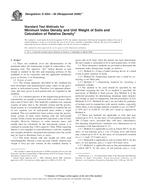 ASTM D4254-00(2006)e..
ASTM D4254-00(2006)e..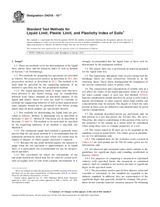 ASTM D4318-10e1
ASTM D4318-10e1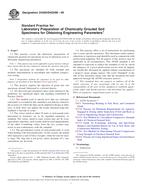 ASTM D4320/D4320M-09..
ASTM D4320/D4320M-09..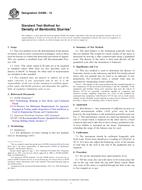 ASTM D4380-12
ASTM D4380-12
 Cookies
Cookies
